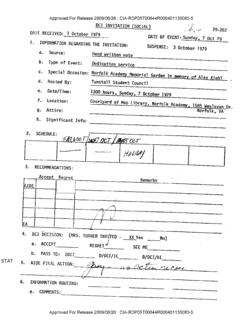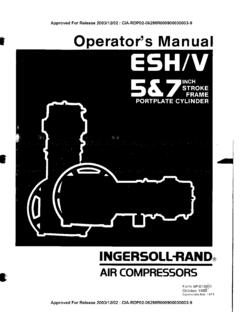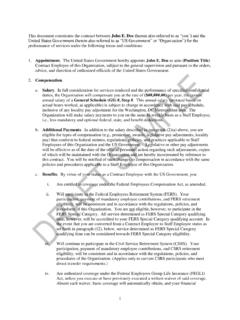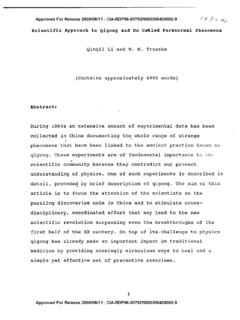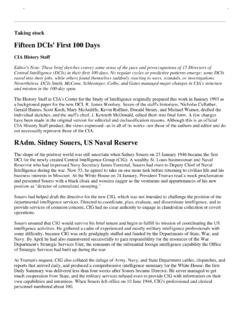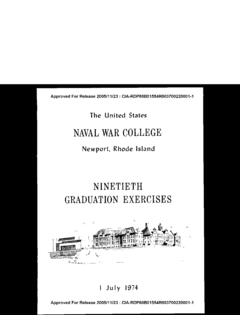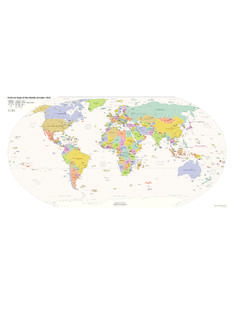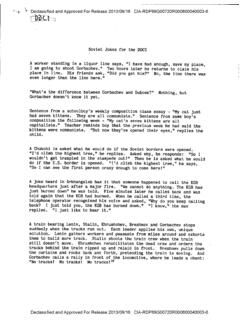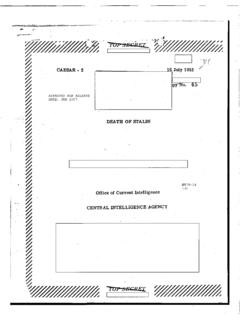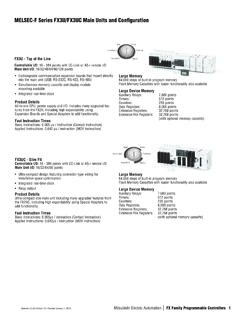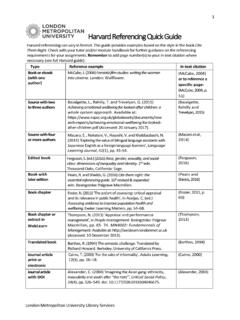Transcription of THE AC-130 GUNSHIP AND ITS VARIANTS
1 THE AC-130 GUNSHIP AND ITS VARIANTSR esearch from 10/2010AC-130 The AC-130 gun ship s primary missions are close air support, air interdiction and armed reconnaissance. Other missions include perimeter and point defense, escort, landing, drop and extraction zone support, forward air control, limited command and control, and combat search and rescue. These heavily armed aircraft incorporate side-firing weapons integrated with sophisticated sensor, navigation and fire control systems to provide surgical firepower or area saturation during extended periods, at night and in adverse AC-130 has been used effectively for over thirty years to take out ground defenses and targets. One drawback to using the AC-130 is that it is typically only used in night assaults because of its poor maneuverability and limited orientations relative to the target during attack. During Vietnam, gun ships destroyed more than 10,000 trucks and were credited with many life-saving close air support missions.
2 AC-130s suppressed enemy air defense systems and attacked ground forces during Operation Urgent Fury in Grenada. This enabled the successful assault of Point Saline s airfield via airdrop and air land of friendly forces. The gunships had a primary role during Operation Just Cause in Panama by destroying Panamanian Defense Force Headquarters and numerous command and control facilities by surgical employment of ordnance in an urban environment. As the only close air support platform in the theater, Spectres were credited with saving the lives of many friendly personnel. Both the H-models and A-models played key roles. The fighting was opened by a GUNSHIP attack on themilitary headquarters of the dictator of Panama and the outcome was never in doubt. All objectives were quickly accomplished and democracy was restored to Panama. During Operation Desert Storm, Spectres provided air base defense and close air support for ground forces. Both the AC-130A and AC-130H gunships were part of the international force assembled in the Persian Gulf region to drive out of Kuwait which Saddam Hussein had invaded in early August 1990.
3 In the following January, the allies launched the actual war known as Desert Storm following the Desert Shield build-up. Victory was accomplished in a few weeks and Kuwait was set free of the foreign invader. Iraq shot down one AC-130H GUNSHIP . It resulted in the loss of all 14 crewmembers, the largest single air power loss of the war. Post war restriction on Iraq required the presence of gunships to enforce them. AC-130s were also used during Operations Continue Hope and United Shield in Somalia, providing close air support for United Nations ground forces. The gunships played a pivotal role during operations in support of the NATO mission in Bosnia-Herzegovina, providing air interdiction against key targets in the Sarajevo area. The Naval Surface Warfare Center, Dahlgren Division (NSWCDD), on behalf of Air Force Special Operations Command (AFSOC) requested information in 2005 that may lead to the acquisition and qualification of a family of 120mm mortar ammunition for enhancing the AC-130 GUNSHIP Lethality and Survivability.
4 Sources Sought N00178-05-Q-1925 was posted18 August 2005 to Federal Business Opportunities (FBO). NSWCDD and AFSOC are seeking information on any (guided or conventional) 120mm mortar round that is currently fielded, currently a Program of Record (POR), or technology mature enough to enter into an ACTD or similar demonstration. The 120mm mortar concept shall offer benefits to the AC-130 fleet through: Employment flexibility through use of munitions currently available; Greater lethality through more fragmentation weight and greater blast damage; Precision strike capability; Increased standoff range and attack altitude while maintaining responsiveness; Reduction in collateral damage; and Reduction in danger close distance when supporting troops in contact. For the 105-mm gun, 100 rounds weighs 4200 lbs. The recoil load is about 10,900 lbs, with a gun Recoiling Weight of 1,465 lbs. The muzzle pressure is 3,560 psi. It is a legacy system being phased out of the US Army inventory.
5 There is little guided technology ongoing. For the 120-mm mortar, 100 Rounds weighs 3200 lbs. This weapon has a recoil Load of ~5,600 lbs with a gun weight of 1,315 lbs. The muzzle pressure is 1,620 psi. This is the leading FCS fire support weapon and the Stryker Brigade Combat Team fire support weapon. There is a lot of Guided Munitions development work different VARIANTS AC-130A Spectre The A-model GUNSHIP was the first AC-130 model. The aircraft is 97 feet 9 inches long and 38 feet 3 inches tall. It has a wingspan of 132 feet 7 inches and a wing area of 1,745 sq. feet. Initially, the C-130 had a maximum speed of 384 mph and an un-refueled range of 2,450 miles with maximum load. However, with the aerial refueling modification, the range for the later model gunships was only limited by crew endurance. The high-wing design of this aircraft and its large capacity made it especially suited as a GUNSHIP . The first GUNSHIP , the AC-47, with low wings, reduced its field of fire.
6 Having the guns below the wings eliminated the basic problem of the AC-47. Also, the large C-130 could carry more ammunition for its heavier weapons. The AC-47 was equipped with three mini-guns. In contrast the AC-130A carried and 20mm weapons; the AC-130H fired 20mm, 40mm and 105mm guns; and the newest GUNSHIP , the AC-130U, is equipped with 25mm, 40mm and 105mm weapons. The C-130 GUNSHIP was a new weapon system in an old airframe. Therefore, there were a number of firsts that one model or another chalked up for the GUNSHIP . Spectre was operationally tested at Eglin Air Force Base, Fla., from June to September 1967. It initially deployed to Nha Trang, Republic of Vietnam Sept. 20, 1967, and flew its first combat mission Sept. 27. Its first truck busting mission was flown Nov. 8, 1967, and all A-model gunships were assigned to Detachment 2,14th Commando Wing. In 1968, Det. 2 was assigned to the 8th Tactical Fighter Wing and became the 16th Special Operations Squadron.
7 At that time the C-130A was renamed the AC-130A. Spectre suffered it first battle damage from anti-aircraft artillery Sept. 26, 1968. The sturdy C-130 returned to base. In December 1968, F-4 Phantoms first escorted the GUNSHIP in an effort to protect it from ground fire. However, the first GUNSHIP was lost with two crewmembers May 24, 1969. One was killed when the GUNSHIP was hit and the other perished when the plane crashed at home base. Five of the 18 gunships were shot down or crashed while serving in Vietnam. A GUNSHIP accomplished an unusual feat, May 8, 1969, when it shot down an enemy helicopter. Thus was born the nickname the "fabulous four engine fighter" to the chagrin of fighter pilots who where having few opportunities for air-to-air kills. Firepower increased when the first 105mm cannon arrived for installation on the GUNSHIP Feb. 17, 1972. The artillery piece was first used in combat March 1, 1972. The Air Force commemorated the end of an era 10 September 1995 with the retirement of the first C-130 aircraft to comeoff a production line.
8 The aircraft, tail number 53-3129, went into production at the Lockheed Aircraft Co. in Marietta, Ga., in 1953 and was the original prototype of what was to become a long line of C-130 Hercules aircraft designed and built byLockheed. The aircraft, affectionately dubbed "The First Lady," was one of five AC-130A GUNSHIP aircraft retired during an official ceremony. While the other four aircraft were sent to the Aerospace Marketing and Regeneration Center at Davis-Monthan Air Force Base, the First Lady went on permanent display at the Eglin Air Force Base Armament Museum. The 919th Special Operations Wing's gunships, all around 40 years old, had reached the age of mandatory retirement. The only other gunships in the Air Force inventory are employed by active-duty members at Hurl Burt Field, which has less than 20 gunships Spectre The Vietnam-era AC-130E "Pave Spectre"was an improved version of the AC-130A"PAVE PRONTO" aircraft. The C-130E wasequipped with more powerful versions of theAllison T56 turboprop engines.
9 The AC-130 Ewas later upgraded to AC-130H standardsunder project "Pave Spectre II" The AC-130 is an excellent fire supportplatform with outstanding capabilities. Withits extremely accurate fire control system,the AC-130 can place 105mm, 40mm and25mm munitions on target with first roundaccuracy. The crew of these aircraft areextremely proficient working in militaryoperations in urban terrain [MOUT]environments. Many ground units havebegun to use Infra-red (IR) tape either asarm bands or sewn to the top of theirballistic helmet for marking troops andvehicles, especially when working with theAC-130. It only takes a very small piece of IRtape to be distinguished as friend or foe byan AC-130 , and anything larger than a oneinch by one inch piece is going to white outa large portion of the monitor aboard theaircraft. Because of the hostage situation in Teheran,Iran, four H-model gunships of the 16th SOSflew nonstop from Hurl Burt Field toAnderson Air Force Base, Guam in 1979 andlater were part of the support force duringthe hostage rescue attempt in , weather and mechanical problems with helicopter forced the mission abort of this heroic effort.
10 In October 1983, the gunships of the 16th SOS played a very significant part in the rescue of American medical students on the island of Grenada. Without the firepower of the AC-130Hs, the invasion of Grenada would have cost more American lives. From late December 1989 to early January 1990, 23 AF participated in the re-establishment of democracy in the Republic of Panama during Operation JUST CAUSE. Special operations aircraft included active and AFRES AC-130 Spectre gunships, EC-130 Volant Solo psychological operations aircraft from the ANG, HC-130P/N Combat Shadow tankers, MC-130E CombatTalons, and MH-53J Pave Low and MH-60G Pave Hawk helicopters. Spectre GUNSHIP crews of the 1 SOW earned the MackayTrophy and Tunner Award for their efforts. Both the AC-130A and AC-130H gunships were part of the international force assembled in the Persian Gulf region to driveout of Kuwait which Saddam Hussein had invaded in early August 1990. In the following January, the allies launched the actual war known as Desert Storm following the Desert Shield build-up.
